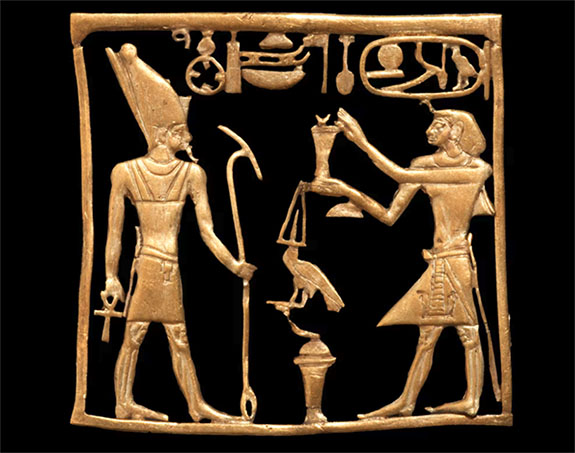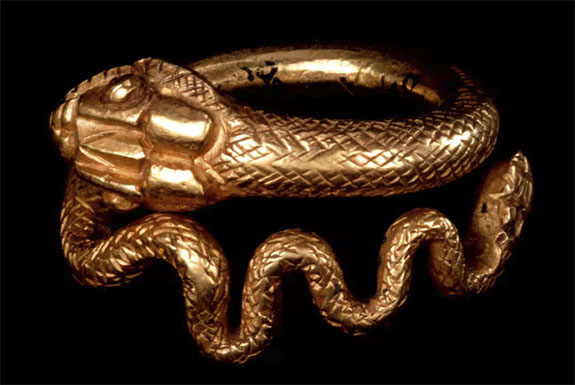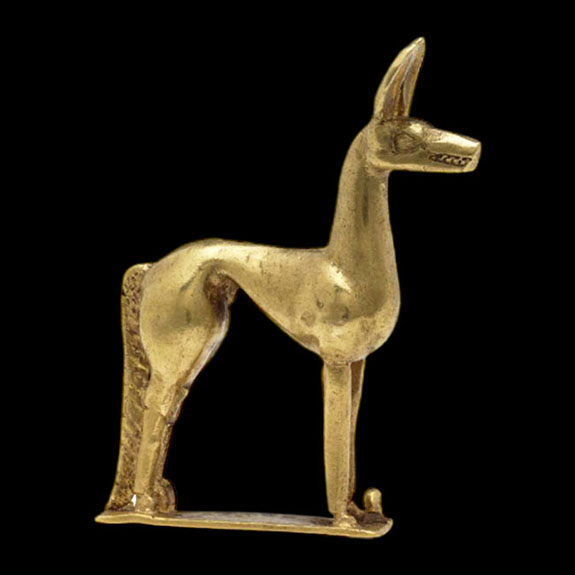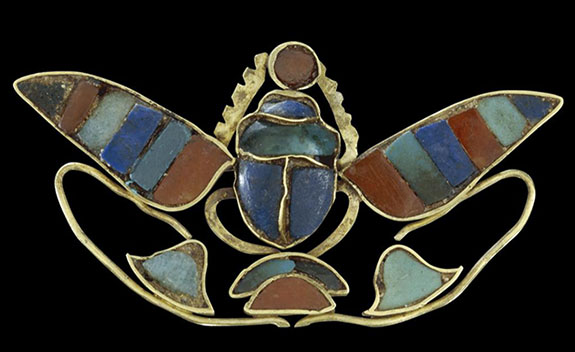'Pharaoh' Exhibition Highlights Exquisitely Crafted Jewelry of the Ancient Egyptians
If you're planning a trip to the Land Down Under in 2024, be sure to see the "Pharaoh" exhibition at the National Gallery of Victoria (NGV), where more than 500 objects celebrating 3,000 years of ancient Egyptian jewelry, art and visual culture will be on display.

The huge collection will be on loan from The British Museum, which has amassed one of the most exceptional collections of ancient Egyptian objects in the world. It's the largest international loan the London institution has ever undertaken.
Running from June 14 through October 6, the landmark presentation will unpack the phenomenon of pharaoh, those all-powerful kings who claimed a divine origin.

"What really sets our show apart is a focus on the artistic aspects of these works and the sheer beauty and skill of the crafting of these works," said Amanda Dunsmore, NGV's senior curator, international decorative arts and antiquities. "Ancient Egyptian sculptors were absolute masters of their craft."
Among the 500 works are a wide array of exquisitely crafted gold jewelry, monumental sculpture, architecture, temple statuary, papyri (documents), coffins and a rich array of funerary objects.

The pharaohs presented an idealized image of themselves as invincible warriors and fervent worshippers of the gods. This is evident from the imagery on rings, bracelets and personal treasures, to the statues and monuments of colossal scale. Among the largest items is a 1.5-ton, 4-foot-wide fist of Ramses II.

The exhibition will be divided into seven thematic sections that explore the pharaoh’s roles and duties, including as the high priest officiating in temples, the head of the country’s administration, the leader of the army and the head of the royal family. The pharaohs were responsible for protecting Egypt against its enemies and ensuring universal order. They ruled both Upper and Lower Egypt from the 1st Dynasty (c. 3000 BCE) until the Roman conquest in 30 BCE.
Credits: Images courtesy of The Trustees of the British Museum.

The huge collection will be on loan from The British Museum, which has amassed one of the most exceptional collections of ancient Egyptian objects in the world. It's the largest international loan the London institution has ever undertaken.
Running from June 14 through October 6, the landmark presentation will unpack the phenomenon of pharaoh, those all-powerful kings who claimed a divine origin.

"What really sets our show apart is a focus on the artistic aspects of these works and the sheer beauty and skill of the crafting of these works," said Amanda Dunsmore, NGV's senior curator, international decorative arts and antiquities. "Ancient Egyptian sculptors were absolute masters of their craft."
Among the 500 works are a wide array of exquisitely crafted gold jewelry, monumental sculpture, architecture, temple statuary, papyri (documents), coffins and a rich array of funerary objects.

The pharaohs presented an idealized image of themselves as invincible warriors and fervent worshippers of the gods. This is evident from the imagery on rings, bracelets and personal treasures, to the statues and monuments of colossal scale. Among the largest items is a 1.5-ton, 4-foot-wide fist of Ramses II.

The exhibition will be divided into seven thematic sections that explore the pharaoh’s roles and duties, including as the high priest officiating in temples, the head of the country’s administration, the leader of the army and the head of the royal family. The pharaohs were responsible for protecting Egypt against its enemies and ensuring universal order. They ruled both Upper and Lower Egypt from the 1st Dynasty (c. 3000 BCE) until the Roman conquest in 30 BCE.
Credits: Images courtesy of The Trustees of the British Museum.

